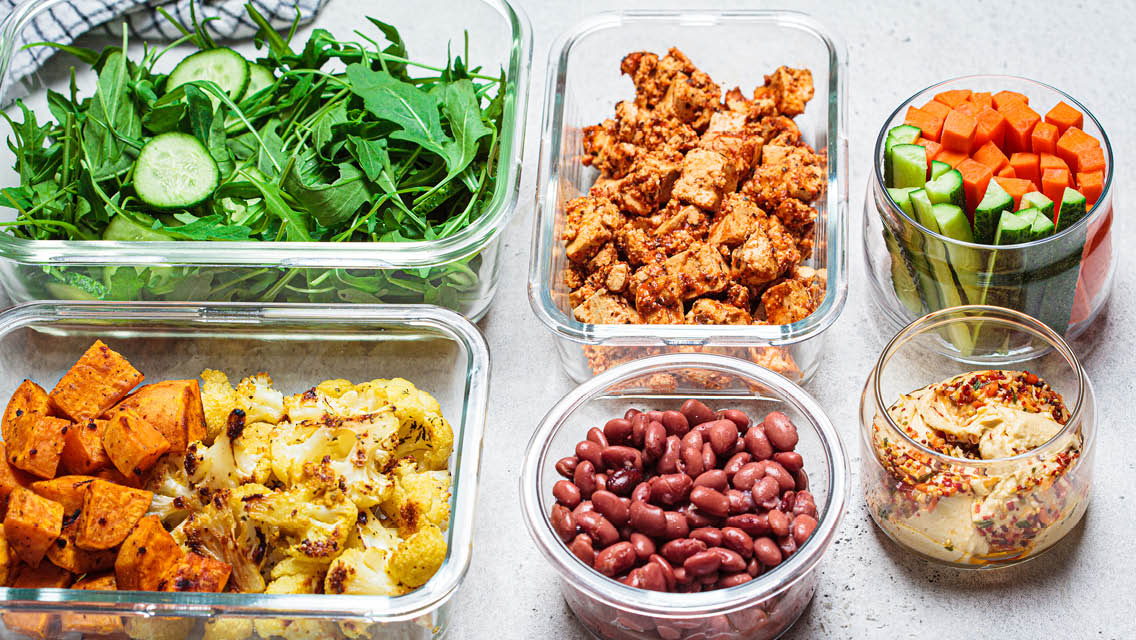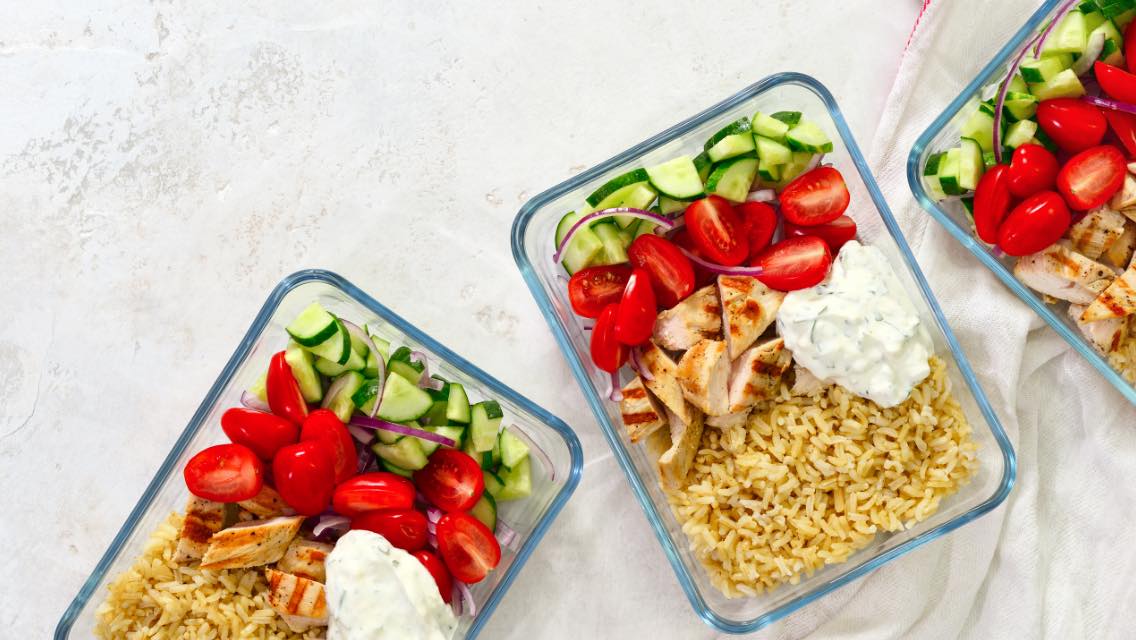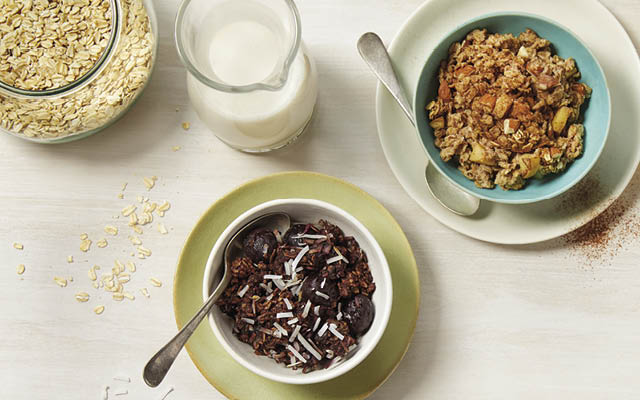There’s a reason why meal prep has taken off over the last decade: It’s a convenient way for many folks to plan and execute recipes. With just one day of cooking, you can have a whole week’s worth of nourishing, ready-to-reheat dishes at arm’s reach.
But this method isn’t without its drawbacks. Though plenty of people love the ease of cooking only once a week, just as many battle boredom from eating the same meals day in and day out, especially because preprepped dishes tend to lose their freshness and vibrancy over time.
Fortunately, there’s a solution for all the home cooks out there who want to take a more minimalist approach to meal prep: component cooking, which is the practice of preparing separate ingredients in advance so they’re at the ready in your fridge or freezer. It’s like having a handful of shortcuts to a variety of flavorful dishes — a real boon for healthy eating when hunger closes in, explains Michelle Tam, best-selling author of Nom Nom Paleo: Let’s Go!
“Component cooking is good for anyone who wants to save time, money, and energy in the kitchen while still enjoying delicious and nutritious home-cooked meals,” she says.
Like meal prep, this clever approach can help you stick to your grocery budget, reduce food waste, and cut back on your time in the kitchen. It’s a satisfying solution for those looking to combine convenience and wholesome meals without sacrificing culinary creativity.
Component cooking still involves planning, but it’s not as rigid as meal prep and offers more flexibility across different lifestyles and taste preferences.
“You focus on tasks like roasting multiple chickens or a big batch of vegetables, browning a large batch of ground beef, and preparing precut vegetables and sauces,” explains Danielle Walker, best-selling author of Healthy in a Hurry. “This allows for greater versatility in meal creation throughout the week.” There’s less risk of palate burnout and no limit to what you can create.
Component cooking still involves planning, but it’s not as rigid as meal prep and offers more flexibility across different lifestyles and taste preferences.
Because you can assemble various dishes using the prepped components, Walker says, “it’s like having a culinary toolbox with versatile ingredients, making it easier to adapt to changing tastes or dietary needs. It also doesn’t take as much time as preparing full meals.” And, she adds, the meals taste fresher.
How to Start Component Cooking
Have some of each of the following elements ready to go so you can dive into recipes as needed. For those just starting out, Walker recommends preparing “something like 50 percent vegetables, 25 percent protein, and 25 percent starches or gluten-free grains as a guideline. But remember, these ratios can be adjusted to suit your personal preferences and dietary requirements.”
Fresh Produce
Vegetables are the cornerstone of component cooking, and stocking your fridge with chopped raw broccoli, squash, carrots, bell peppers, or whatever is in season provides you with a wealth of nutritious ingredients to choose from come mealtime. “Some of my go-to components include prepped vegetables,” says Walker. “These can be used as building blocks for countless dishes, from salads to hearty bowls, stir-fries, and more.”
She also advocates thinking about fruit as a prep component. “I slice and store them in containers for easy snacking or adding to meals. Berries are great for breakfast bowls, while apple slices can be paired with almond butter as a healthy snack or thrown into a salad.” Squeeze a bit of lemon juice over sliced apples to prevent oxidization, and store prerinsed berries in a container lined with paper towels to absorb excess moisture.
Like a musician improvising a solo, pick and choose the elements to create your culinary masterpiece. Use veggies to make a stir-fry (try our Thai Stir Fry recipe), or toss them in a chopped salad (like this one). Feeling fruitier? Check out our smoothie bowl recipes.
Cooked Grains and Legumes
Grains and legumes offer a kaleidoscope of vital nutrients, including fiber and plant-based protein. Plus, they can open the door for you to experiment with an array of international cuisines. Red lentils are the backbone of our spicy dal (find that recipe here). Use cooked chickpeas to make homemade hummus with our recipes at Hummus, 3 Ways.
Cooked grains and legumes are also storage superstars: They keep up to four days in the fridge and can be frozen for up to six months. Rice is a great option, especially for gluten-free folks: Use it as the base for a rice bowl, like in our Spring Greens Korean Rice Bowl.
There’s also a wide world of whole grains beyond rice, including nutrient-dense quinoa, farro, and more. Learn about 11 ancient grains worth trying at “11 Ancient Grains to Try,” and then use your favorite to build your best grain bowl with our template at “How to Build Your Own Grain Bowl.”
.
Cooked Chicken
Baked, boiled, grilled, or poached, chicken is a stellar protein for component cooking. “I often roast two chickens for the week, shred the meat, and use the bones for bone broth,” Walker explains. “We can do a taco bowl one night, roast some potatoes with seasoning the next night, and add a little barbecue sauce to make chicken sandwiches or a quick salad the next night.”
Refrigerated cooked chicken should keep three to four days when stowed in a sealed container. Get cooking with our Classic Roast Chicken, or use cooked chicken for the base of your own taco night with our advice at “Dinner, Remixed: Tacos.”
Roasted Vegetables
The smoky flavor of roasted veggies instantly brings a new dimension to a recipe; having a selection available in your fridge can be a real timesaver.
“I love roasting heartier veggies, like broccoli, cauliflower, Brussels sprouts, kabocha squash, and fingerling potatoes,” says Tam. “I normally toss them in olive oil or avocado oil and sprinkle on my favorite seasoning salt before roasting them on a sheet pan in a hot oven. I really love having ready-to-eat veggies available in the fridge.”
Most vegetables take well to roasting. Once cooled, they can be stored in the fridge for three to four days. Add them to grain bowls, pasta, quiches, and more — or use your favorite roasted veggies as a shortcut for our Creamy Vegetable Soup.
Boiled Eggs
Whether chopped into a Niçoise salad or layered with smoked salmon between thick slices of whole-grain sourdough, the humble boiled egg is a component-cooking champion. “Hard-boiled eggs are definitely a staple in my component cooking,” says Walker. “I use them in salads, as a protein-packed topping for a roasted sweet potato, or as a quick snack for the kids with a turkey jerky stick.”
Boiled eggs stay fresh for up to seven days when refrigerated, but they’re so versatile you’ll easily use them up before the week’s out. (Try our simple, four-step method for perfect boiled eggs.)
Prepared Condiments
Sauces and dressings are the quickest way to liven up your component meals and introduce new flavors, so you’ll always want to have a few tucked away in your fridge. “I always make a few sauces at the beginning of the week and store them in the fridge so I have instant flavor boosters on hand,” Tam explains. “Just combine veggies, protein, and a sauce, and you’ve got a healthy and amazing meal in minutes.”
Many sauces, dressings, and condiments take minimal effort to prepare and have a shelf life of a week or so. They’re typically healthier than their store-bought counterparts, and you might find they taste better too. (Find a collection of our favorite homemade condiment recipes.)
In a similar vein, a dollop of a fermented condiment — think kimchi or sauerkraut — can be mixed into a salad or a sandwich filling, added to the side of a grain bowl, or used as a topper for virtually any protein. (For a delicious way to get more probiotics into your diet, try our favorite sauerkraut recipe.)
This article originally appeared as “Meal Prep for Minimalists” in the May/June 2024 issue of Experience Life.





This Post Has 0 Comments